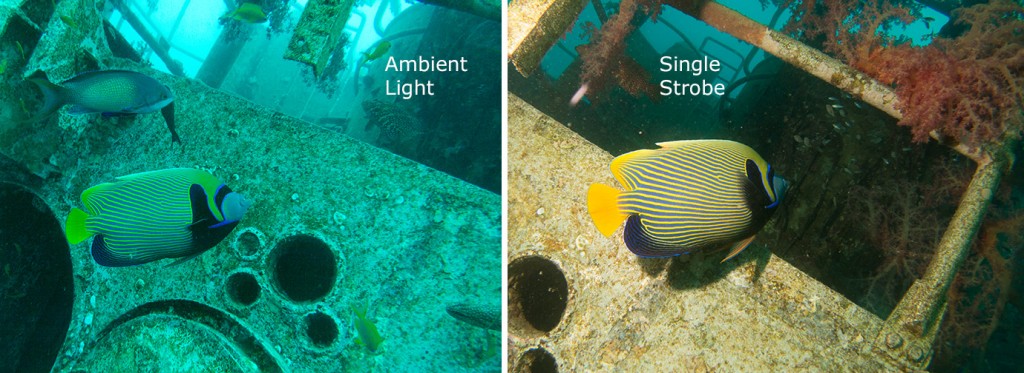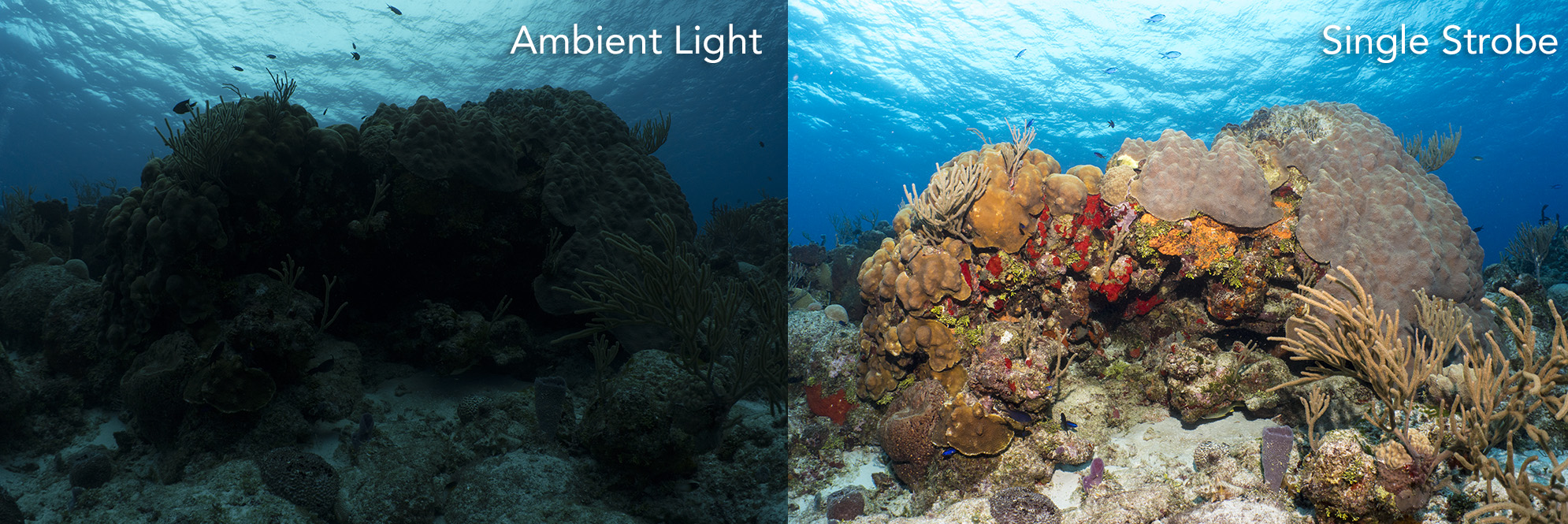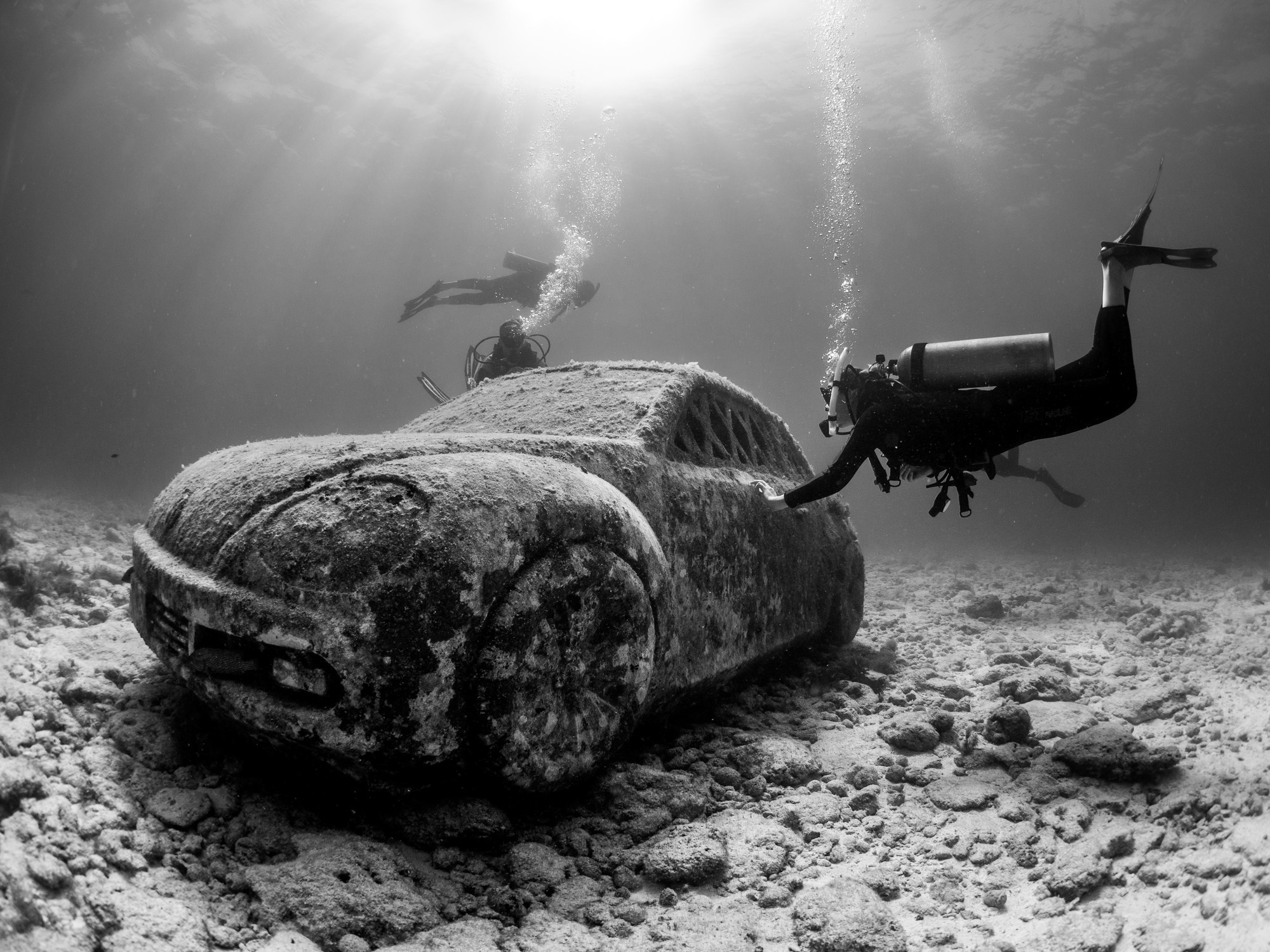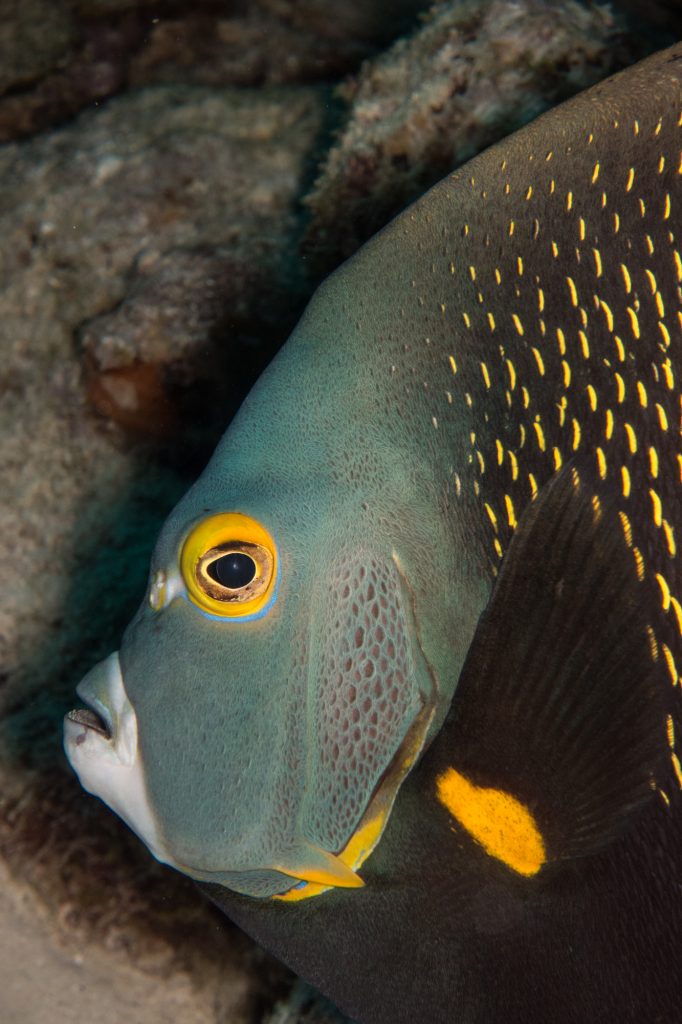Why are underwater strobes so damn important?

Photography is all about light. It actually means “Drawing with light” ( Photo=light, Graph = draw).
Many beginner photographers take some time before they grasp this concept and that’s why I, as a photography instructor, take extreme care in passing on that little bit of information, which later goes a long way.
Once you fully understand that concept, the rest of the terms and technical stuff are much easier to comprehend.
Whether you shoot underwater or above , your most important concern is light – direction, power, temperature and quality are important properties you need to notice on a regular basis when taking a photo.
Above water, working with ambient light is fun, challenging, interesting and rewarding. That’s why working with strobes is usually left for night, low light and studio photography and not needed regularly.
When going underwater, your ambient light options become limited. Light acts differently underwater as you probably remember from your open water / advanced diver course (water column, red vanishing first etc…).

Understanding how light works as we go deeper is extremely important, even if you are not yet accustomed to shooting manual and you are still using the Auto mode on your underwater camera.
How does light work underwater?
In a nutshell, when going deeper underwater, light (mainly from the sun) is absorbed, and the amount of visible light diminishes. Longer wave lengths (red) are absorbed easier than short wave lengths (blue). You will notice that objects that are normally white above water, seem bluish underwater, and red objects appear dark, or even black. Even on best visibility and clear water, less than 25% of the surface light reaches a depth of 10 m (33 feet). At 100 m (330 ft) the amount of light is 0.5% of that at the surface.
What does all this mean? It means that in order to get a photo that reflects the actual beautiful colors of marine life, you need to minimize the distance that light travels within water to a 1-2 feet, and for that you need to bring you own light source down under!


Don’t get me wrong. It is possible to shoot with ambient light and some of the most beautiful images taken underwater, take advantage of the fantastic effects light creates underwater such as sun rays. There are also ways to improve color by using red filters, shooting RAW and adjusting WB on post processing, or even just shooting shallow, but none of these methods can compare to correct use of strobes.

Shooting with ambient light is great for very specific types of underwater photography, and even those might be greatly improved by mixing strobe and ambient light efficiently in the frame. I estimate that using a strobe is the way to go with about 80% of underwater photos.

On-Camera Flash
You might ask, why not use my on-camera flash? Good question!
The on-camera flash is a good compromise. You can get that light you need so badly underwater, and bring back those true colors that vanished. But the on-camera flash has two major setbacks:
- It is just too weak. Water absorbs light very efficiently so you need much more juice on your flash. The on-camera flash is usually useless more than 1-2 feet away.
- It’s located very close to your actual lens. This produces two problems. First is non-complimenting lighting, which flattens your subject and ruins the viewers depth perception in the image.
The second is the infamous backscatter, which is light spots reflected from particles in the water and frustrates underwater photographers since the beginning of time (or of UW photography at least…)

By using an external strobe, we can overcome these two setbacks and start making some amazing photos!
If you are already convinced, there are some factors you should consider when shopping around for your first strobe.
The basic properties of an underwater strobe are:
- Sync type – Fiber optics, sync cord or optical slave.
- TTL vs non-TTL. This function is sort of an “Auto” mode for flash power, delivering correct flash exposure for every shot (Not always 100% reliable. Read more about it here.)
- Power – The more the merrier, but very low power mode is important as well, for macro shots and close-ups.
- Beam angle – Get better coverage for those wide angle shots. Usually comes with an optional diffuser for wider beam.
- Recycle time – Very important property! That second and third shot of the shark coming right at you could be a prize winner. He might already turn around at the fourth. You want it properly lit.
- Mounting options – YS mount, ball mount or specific manufacturer mount. Adapters are available for almost every combination.
You would also need to choose a mounting rig (tray / arm). You can use just a simple single arm for your cold-shoe mount, or get a full single or dual tray & arm system, with flex arms or ball & joint arms. Each have their pros and cons, and in the end it’s a matter of personal preference.
The best way to decide what’s right for you, is to consult with experts and provide info on your gear, experience and budget. Our team of experts would be more than happy to answer all your questions and recommend the right strobe for you. Contact us here.
If you are still not convinced, let me just say this:
A STROBE IS THE REASON WHY MOST AWESOME UNDERWATER PHOTOS ARE SO AWESOME!
Dive safe and take care of our oceans!
RM
Learn more about underwater strobes on our Ultimate Underwater Strobe Guide!
- Native Lenses vs. Wet Lenses for Underwater Photography – December 20, 2023
- The Complete Guide to Practicing at Home for Underwater Photographers – October 4, 2023
- Best Strobe for Underwater – The Ultimate Strobe Guide (Updated!) – June 29, 2023

 CAD
CAD

9 comments
Nice & simple. Thanks. I look forward to more, as a newbie to photography in general I am very appreciative
of your simple explanations. Loved the definition of photography. I did not know that. I live in a very rural area and teachers are not easy to find on this subject. I have only done 4 or 5 dive trips with my camera. Everytime gets better and more enjoyable. Thanks again.
Glad you enjoyed it Trina!
I will keep posting more guides in the near future 🙂
Stay tuned…
Very informative
Taken a lot of underwater pictures and now ready to buy a strobe
And has helped a lot
Thanks
How do you feel about using
A sea&sea ys 01 as master and sea&sea ys 03 as a slave
Or do u think better buying 2 x ys 01
Many thanks
Mark
Sorry for the late reply on this Mark!
The YS-01 + YS-03 combination works great. If you slave it off the YS-01, you basically get 2 manual strobes in one, since the YS-03 would mimic the YS-01 precisely. So you can control both strobes from the YS-01 controls.
Glad you like it Mark!
Hi Ran, you make it sound so easy. I recently used what I purchased from you guys but didn’t really capture the vibrant colors. I’m now thinking I was to far from the subject. How do I position the strobe? Should I shoot with or without the diffuser. Having some difficulty changing the settings, IE from Auto to scene underwater. You can see my pics on facebook.
Hi Bernie,
Take a look at Ran’s article about strobe positioning.
http://www.housingcamera.com/blog/guides-tutorials/ultimate-guide-underwater-strobe-positioning
Regards, Tal
Just beginning my photography journey. Enjoying the tips, keep em coming Thx.